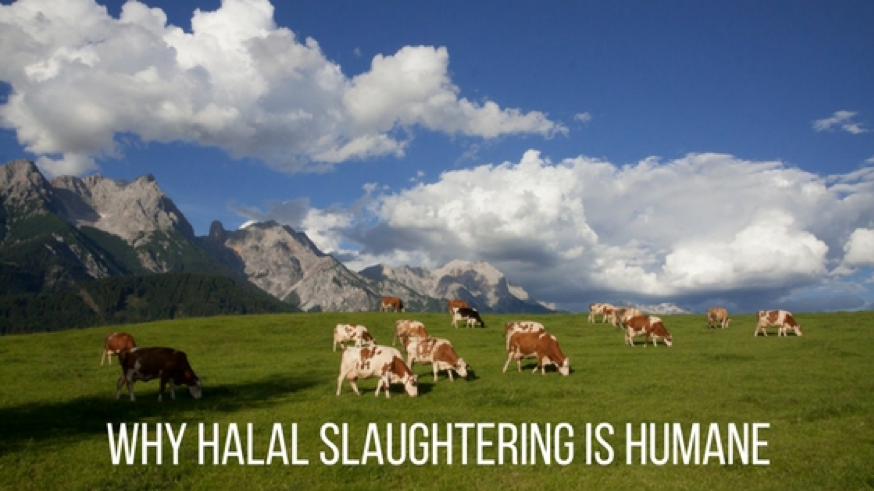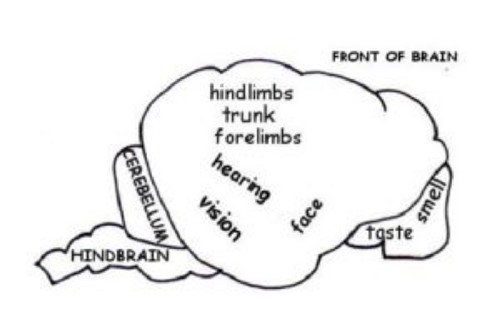
By Rohaizad Hassan, The Halal Industry Quest
Lately, there is no mystery on mistreatment of animals done by anyone including a Muslim. It is a behaviour that violates the normative rules, understandings, expectations of the religion itself. Islam and Halal is a system, a global faith and a way of life. It is similar to any system or organisation where they shall disassociate any deviant act or behaviour which against the rules and regulation. It works the same for religion.
We can always ask ourselves, could a particular tradition or culture be a deviant as well? So what people usually do when you could not distinguish between right or wrong? End of the day, you usually have to refer back to rules, regulation and as for religion, it is always the scriptures. As for Islam, is the Noble Quran and Prophet’s Hadith.
“God has ordained kindness (and excellence) in everything. If the killing (of animals) is to be done, do it in the best manner, and when you slaughter, do it in the best manner by first sharpening the knife, and putting the animal at ease.”- Prophet Muhammad (pbuh) narrated by Imam Muslim.
Let’s learn what Halal slaughtering really is.
The Halal slaughtering is partly about having the incision deeply to hasten (i) the bleeding (to eliminate any possible diseases); and (ii) death of the animal.
Scientifically it is proven that the animal didn’t feel any pain if the impulse of the body did not reach the brain, practically by severing the following :
a)Trachea (halqum),
b)Oesophagus (mari’),
c) Carotid arteries and jugular veins (wadajain)
From a science perspective, sensory neurons carry impulses most eventually reach the brain. The brain acts to interpret, sort, and process the incoming pulses and then decide on a response. The animal physical response and uncoordinated movement you have seen after the incision is because the animal loses the oxygen, it causes a tremor and not because of the pain. However, science is not an ultimatum yardstick for Muslim in this case, but it is an acceptable assessment in the modern world.
According to Professor Wilhelm Schulze, the “Islamic way of slaughtering is the most humane method of slaughter animal” based on his studies at the School of Veterinary Medicine, Hannover University in Germany. See below.
Some citation on the animal nervous system :
Nearly all the external signs that lead us to infer pain in other humans can be seen in other species, especially the species most closely related to us–the species of mammals and birds. The behavioural signs include writhing, facial contortions, moaning, yelping or other forms of calling, attempts to avoid the source of the pain, appearance of fear at the prospect of its repetition, and so on. In addition, we know that these animals have nervous systems very like ours, which respond physiologically like ours do when the animal is in circumstances in which we would feel pain: an initial rise of blood pressure, dilated pupils, perspiration, an increased pulse rate, and, if the stimulus continues, a fall in blood pressure. Although human beings have a more developed cerebral cortex than other animals, this part of the brain is concerned with thinking functions rather than with basic impulses, emotions, and feelings. These impulses, emotions, and feelings are located in the diencephalon, which is well developed in many other species of animals, especially mammals and birds. – Do Animals Feel Pain? by Peter Singer Excerpted from Animal Liberation, 2nd edition, New York: Avon Books, 1990, pp. 10-12, 14-15

The Cerebellum
The cerebellum (little brain) looks rather like a smaller version of the cerebral hemispheres attached to the back of the brain. It receives impulses from the organ of balance (vestibular organ) in the inner ear and from stretch receptors in the muscles and tendons. Two systems are involved in coordination in animals. These are the nervous and endocrine systems. The first operates via electrical impulses along nerve fibres and the second by releasing special chemicals or hormones into the bloodstream from glands. – wiki – Anatomy and Physiology of Animals/Nervous System.
Wilhelm Schulze Research

From Wikipedia, the free encyclopedia
Wilhelm Schulze (10 December 1920, Leipzig – 30 December 2002) was a German professor of veterinary medicine, director of the University of Veterinary Medicine Hanover (1966–68, 1978–80 and 1980-81) and a specialist for pigs.
Between 1974 and 1978 Schulze and his colleague, Dr. Hazim carried out a study incorporating EEG (electroencephalograph) with electrodes surgically implanted on the skull of 17 sheep and 15 calves, at the School of Veterinary Medicine, Hannover University in Germany. The study:
‘Attempts to Objectify Pain and Consciousness in Conventional (captive bolt pistol stunning) and Ritual (knife) Methods of Slaughtering Sheep and Calves’is reported on Islamic websites to have concluded that “the slaughter in the form of a ritual cut is, if carried out properly, painless in sheep and calves according to EEG recordings and the missing defensive actions” (of the animals). And that “For sheep, there were in part severe reactions both in bloodletting cut and the pain stimuli” when captive bolt stunning(CBS) was used. This study is cited by the German Constitutional Court in its permitting of ‘Dhabiha slaughtering”.
The following results were recorded:
The first three seconds from the time of Islamic slaughter as recorded on the EEG did not show any change from the graph before slaughter, thus indicating that the animal did not feel any pain during or immediately after the incision.
For the following 3 seconds, the EEG recorded a condition of deep sleep – unconsciousness. This is due to the large quantity of blood gushing out from the body.
After the above-mentioned 6 seconds, the EEG recorded zero level, showing no feeling of pain at all.
As the brain message (EEG) dropped to zero level, the heart was still pounding and the body convulsing vigorously (a reflex action of the spinal cord) driving a maximum amount of blood from the body thus resulting in hygienic meat for the consumer.
Also read: ‘Halal Slaughter technique the most humane way says American farmer philosopher’
In addition to the need of slaughtering, the idea of reciting prayers for an animal is meant for the animal itself, and not for other means. Ironically, some said it is for converting the unbeliever to become a Muslim – well, these are some of the taboo and misconception propagated by the media. Humankind has a purpose in life, and likewise, the animal has one too.
God has also questioned those who did not want to eat meat in Al Quran 6:119 (The Cattle Verse)
“And why should you not eat of that upon which the name of Allah has been mentioned while He has explained in detail to you what He has forbidden you, excepting that to which you are compelled. And indeed do many lead [others] astray through their [own] inclinations without knowledge. Indeed, your Lord – He is most knowing of the transgressors.”
Eventually, knowledge is what matters most. We can keep going, debate and discuss always good. In the end, what is right is still a quest.
Learn more from this video :
Best-In-Class Animal Welfare:
Bio-Diversity
The use of dung beetles as bioindicators provide LAW abattoir with reliable scientific evidence that the eco-system of the production site is maintained in a fully balanced state, thus ensuring that the site remains natural at all times. Natural sites must conform to certain health, and environmental standards and assessments are carried out for pasture health, stocking rates, farm management and the environmentally safe use of anti-parasitic drugs.
This scientific evidence is provided by The University of Pretoria following farm audits by the university staff and forms part of the audit system of the ISO9001 quality assurance program. In addition to these audits, samples of urine, kidneys, water, soil, feed, etc. sent away for analysis on a regular basis in accordance with the ISO9001 audit protocol to ensure compliance with the system.